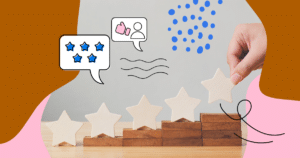The 2023 Women’s World Cup concludes next Sunday, August 20th, and with it, the most sponsored and broadcasted women’s sports event ever will also end.
I personally don’t know much about soccer (and this article will most definitely not be about matches and skills). Still, I do know a thing or two about marketing, diversity, equity, and inclusion. Every time a saw a new headline talking about the unprecedented investment and sponsoring achievements of this year’s female world cup, I couldn’t help but wonder: why did it take so long?
With this bittersweet feeling of pride over the female teams’ accomplishments and discomfort with brands still taking them for granted, I’d like to expand the discussion on how brands are already using the Women’s World Cup to their advantage and where they’re still missing.
A few points I wish to bring to the table are:
- It’s rather simple for the media to point out a series of remarkable achievements when the previous scenario is marked by inequalities, as is the case when discussing gender in soccer (and many other sports);
- We should certainly acknowledge all accomplishments, but there’s a risk in having such a short memory and narrowing everything down to achievements. This could lead to overlooking the entire structure of inequality that came before;
- Lastly, and most importantly, I found myself reflecting on how the brands are “missing opportunities in the penalty area” during this FIFA Women’s World Cup. It’s such a promising and exhilarating setting for women in sports. And, naturally, I pondered over how other brands are finally beginning to make a significant impact.
Shall we reflect together?
The Context of the Women’s World Cup 2023
According to FIFA, as of August 4th, 1.7 million game tickets had been sold in 2023 — surpassing the initial target of 1.3 million. Furthermore, 42,137 attended New Zealand’s opener, representing the largest crowd in the nation’s soccer history — for both men’s and women’s matches.
Highlights also emerge when it comes to television and online viewership, and even in the sale of jerseys of certain teams. A prime example is the Matildas, the host team of the championship.
Beyond these records, another context catches my attention: this marks the final World Cup appearance for some of the sport’s finest players. For instance, the Brazilian icon Marta, the all-time leading scorer in World Cups among both men and women, and the American stalwart Megan Rapinoe.
Strides Towards Equality and Overlooked Opportunities
Observing this historical scenario in women’s soccer, the feeling is that we’ve made progress, but something is still missing.
This missing piece could be the involvement of small to medium-sized brands that have yet to recognize the market potential within the women’s category or have not sensed the call for heightened social responsibility.
Adidas, Coca-Cola, Hyundai, and McDonald’s, for instance, are partners and sponsors of the tournament, among other giants. The majority of significant market players that have supported women’s soccer are indeed doing a great job. This effort will undoubtedly yield results for the long-anticipated and eagerly awaited gender parity in soccer.
On the other hand, the presence of small and medium-sized enterprises still needs to be heightened.

The buzz still isn’t enough
If there’s one lesson I’ve learned over the years, regarding the correlation between marketing and advocating diversity, it’s that authentic progress in behavior and mindset becomes evident when all brands strive for some recognition within a hot topic.
A recent example is the Barbie movie, which gained traction from modest to substantial businesses across various niches, online and offline media, and influencers of varying sizes.
During the 2022 Men’s World Cup, brands were cautious about not infringing upon FIFA’s copyrights, and the matter was so noteworthy that it merited coverage on our blog. Now, our focus has shifted: the concern is to pique the interest of even small to medium-sized businesses in discussing women’s equity through football. It’s imperative for them to perceive this scenario as a chance for advancement, both in terms of equity and brand enhancement.
Wrapping up
So, my question is: what is your company, agency, or you as a professional doing to support women in sports during this time of so many unprecedented records and achievements? If you’re not doing anything, it’s certainly a missed opportunity.
Here are a few tips on how you can tap into this pool of marketing opportunities:
- Adopt a brand stance for Diversity, Equity, and Inclusion. Employ pivotal moments like the Women’s World Cup to demonstrate this commitment in practice;
- Seek ways to foster connections with your audience during the tournament. This could encompass small gestures, such as acknowledging exceptional women like Marta on social media;
- Start the process now, rather than waiting for another four years! The World Cup may conclude in a matter of days, but gender equality is a theme demanding unwavering consistency from brands and professionals.
If you’re seeking inspiration on where to start, my suggestion is to access our fourth Social Impact, Diversity, Equity, and Inclusion Report from Rock Content! Within it, we discuss what we accomplished in 2022, where we aim to improve, and where we intend to go. Read it now!







